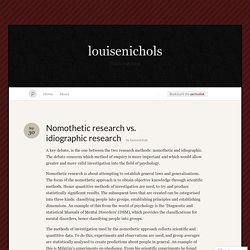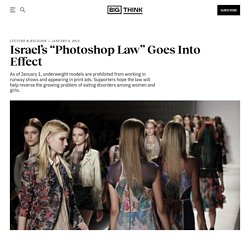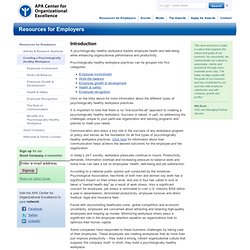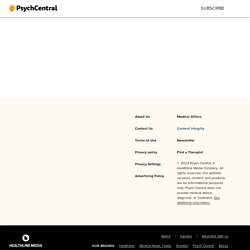

Depression & Treatment. Schizophrenia at Work. TBI. Insomnia. Antisocial & Borderline Personality Disorder. PTSD at Work. Categorical or Dimensional - Measuring the Mind. Stigma & Discrimination. The NIMH Withdraws Support for DSM-5. Abnormal Psychology. Mental Health Benefits: State Laws Mandating or Regulating. Updated: April 2015 Mental health services have been one significant part of medical care for a number of years.

The costs, coverage and availability of such services have been the object of policy discussions and a variety of state legislation. There is not a uniform consensus about the extent to which state government should require coverage for mental health. Since the passage of federal health reform (PPACA) there is a larger role for the federal government and federal-state coordination, described below. For now, 49 states and D.C. currently have some type of enacted law but these laws vary considerably and can be divided roughly into three categories: 1. 2. 3.
"Essential Health Benefits" (EHB) as provided for in the Affordable Care Act (ACA) see NCSL explanation online *Exceptions to Mandate Laws – “Barebones” Policies Note that some state laws apply primarily to "serious mental illness" and may not assure coverage for particular individual diagnoses or circumstances. Nomothetic research vs. idiographic research « louisenichols.
A key debate, is the one between the two research methods: nomothetic and idiographic.

The debate concerns which method of enquiry is more important and which would allow greater and more valid investigation into the field of psychology. Nomothetic research is about attempting to establish general laws and generalisations. The focus of the nomothetic approach is to obtain objective knowledge through scientific methods. Hence quantitive methods of investigation are used, to try and produce statistically significant results. Cross-Cultural Psychology. Ending_CP_Mozambique. Mental Health Issues Have Become a Monumental Problem in the Workforce. John Binns knew something was wrong when he found himself sitting in front of his home computer at 2 a.m. struggling to compose an email to his supervisors.

He had been staring at the screen for three hours, but the words weren’t coming. He was in a mental fog, unable to focus, dreading the thought of sending the email that could sink his career. Generation X Norms. Generation X [Born 1965–1980] As Baby Boomers took their time to grow up in a world that beckoned them, built malls for them and seduced them into adulthood kicking and screaming, Generation X was pushed toward adulthood at an age earlier than any other recent generation.

Whereas Baby Boomers came to understand that the future was theirs for the taking, Generation X felt the future had been given to their parents and older siblings and found the future disappointing and somewhat unappealing. New Study: Americans Have Higher Emotional Intelligence than Canadians... Tipsheet7.pdf. Microsoft Word - 05-12-16 Public workplace report FINAL.doc - WorkplaceIntervention.pdf. Israel's "Photoshop Law" Goes Into Effect. By Kecia Lynn What's the Latest Development?

As of January 1, models who want to work in print ads and runway shows in Israel must provide potential employers with medical proof certifying that they have a body mass index (BMI) of at least 18.5. The new law is nicknamed "the Photoshop law" because of an additional regulation placed on advertisers requiring clear labeling on ads featuring digitally-altered images of models.
Knesset member Rachel Adato, who helped champion the law, says, "A revolution has begun...this law shatters the anorexic ideal serving as an example for the country’s youth. " Activist Dana Weinberg says, "The very fact that the law was passed sends a significant message against extreme thinness. " What's the Big Idea?
The numbers of Israeli women and girls suffering from eating disorders now match those of industrialized Western countries, but the problem went largely unacknowledged until the 2007 death of a well-known Israeli model. What to Do When You Think an Employee May Need Mental Health Help: Mental Health America. Creating a Psychologically Healthy Workplace. Introduction A psychologically healthy workplace fosters employee health and well-being while enhancing organizational performance and productivity.

Psychologically healthy workplace practices can be grouped into five categories: Click on the links above for more information about the different types of psychologically healthy workplace practices. It is important to note that there is no “one-size-fits-all” approach to creating a psychologically healthy workplace. Success is based, in part, on addressing the challenges unique to your particular organization and tailoring programs and policies to meet your needs.
Communication also plays a key role in the success of any workplace program or policy and serves as the foundation for all five types of psychologically healthy workplace practices. In today’s 24/7 society, workplace pressures continue to mount. Some companies have responded to these business challenges by taking care of their employees. . « Resources for Employers. Responding To Mental Illness in Your Workforce: Following the Law. In Part 1 of this series, Leading a Culture Change, we talked about specific steps you can take to create a workplace that responds to mental illness in a compassionate, fair and realistic way.

Here in Part 2, let’s also talk about how to respond in a way that adheres to the spirit and word of the law. Employment Law vs. Disability Law As you know, all employment law is designed to protect employers, as well as employees. However, people with disabilities have long felt that employment law left them out in the cold. What are the accommodation rights and responsibilities of employers, employees, and unions? Intelligence quotient.